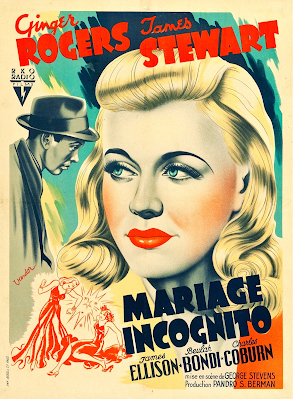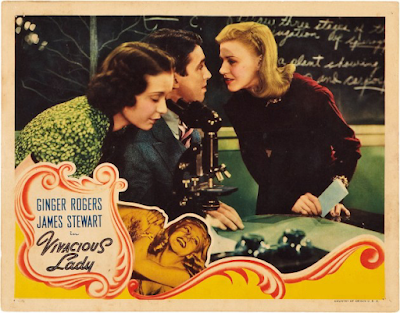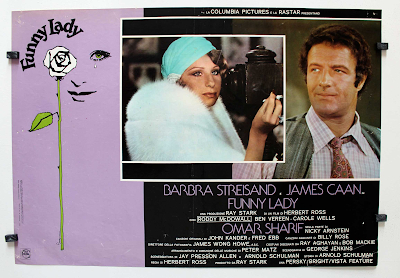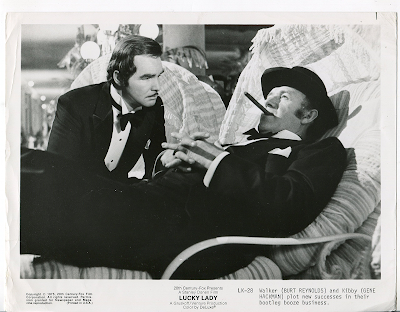Wonderland Burlesque's
Let's All Go To The Movies:
She's A Lady!
Part VI
Sometimes? It takes a lady.
Or so these films would have us believe.
They promise lots of drama, the occasional comedy or musical, and a little bit of dirt!
Let's take a walk down Hollywood Blvd. and shine a light on these magnificent classic films.
This way, if you please. But remember...
Ladies first!
Or so these films would have us believe.
They promise lots of drama, the occasional comedy or musical, and a little bit of dirt!
Let's take a walk down Hollywood Blvd. and shine a light on these magnificent classic films.
This way, if you please. But remember...
Ladies first!
--- ---
Careless Lady
(1932)
This pre-Code American comedy was directed by Kenneth MacKenna and stars Joan Bennett, John Boles, Minna Gombell, Weldon Heyburn, Nora Lane, Josephine Hull, and Raul Roulien.
Joan Bennett had a long and lengthy career, appearing in over 70 silent films before she ever spoke a word on screen. First, she was a sweet blonde ingénue, then a dark-haired seductress, and finally a glamourous matron. Her career was briefly derailed in 1951 when her third husband (she married 4 times) shot her longtime agent point blank in the MCA parking lot because he thought they were having an affair (they weren't). But the scandal took its toll... and she had to get a new agent!
Josephine Hull, who had a rewarding career playing bubbly matrons, would go on to win an Oscar for Best Supporting Actress for her work in 1950's Harvey, opposite Jimmy Stewart.
--- ---
Libeled Lady
(1936)
This had originally been proposed as a starring vehicle for Marion Davies as Connie Allenbury opposite William Powell as Chandler, with Gladys and Warren as supporting roles. The story was eventually reworked so MGM could beef it up to support four stars. Rosalind Russell was originally cast in the role of Connie Allenbury which was later given to Myrna Loy. Loy received third billing despite being the central lead character. Lionel Barrymore was originally cast in the role Mr. Allenbury which was taken over by Walter Connolly.
Jean Harlow and William Powell were a couple at the time the film was made. She desperately wanted the part of Connie Allenbury (Myrna Loy's role) so that she and Powell's character would end up together, but the director and the MGM execs wouldn't allow it. They wanted the film to be another Powell/Loy vehicle and knew audiences wanted Powell and Loy to end up together in their films. Harlow was very disappointed but had already signed on to the film and had no choice but to play the role of Gladys Benton. In the end, she liked the film and agreed that she was more suited to the role of Gladys.
While Spencer Tracy and Jean Harlow play an engaged couple in this film, it was Harlow and William Powell who were contemplating marriage off-screen during production. Unfortunately, Harlow would die the following year, before she and Powell could wed. She was only 26 years old. When Harlow was entombed in Glendale's Forest Lawn Cemetery in 1937, she was dressed in the gown she'd worn in this film.
Vivacious Lady
(1938)
Ginger Rogers recommended Jimmy Stewart for this film, even though they had not worked together on a film previously. The two were dating at the time, and, with Rogers being one of RKO's biggest stars, she got her way.
After four days of shooting in April 1937, James Stewart became ill, and then left to star in Of Human Hearts (1938). RKO considered replacing him, but shelved the production until December of 1937 instead. Actors Donald Crisp and Fay Bainter, who were cast in the original production, were replaced by Charles Coburn and Beulah Bondi.
Since Ginger Rogers' legs were insured for $500,000, they were strapped with boards and padded for protection during the fight scene. Filming on The Story of Vernon and Irene Castle (1939) started soon after this movie wrapped, and RKO could not afford to have an injured musical star.
This film is one of five times that Beulah Bondi portrayed James Stewart's mother. The others are: It's a Wonderful Life (1946), Mr. Smith Goes to Washington (1939), Of Human Hearts (1938) and once on his television series, The Jimmy Stewart Show (1971).
Two years after this film was released, Rogers and Stewart both received best acting Oscars (Kitty Foyle (1940) and The Philadelphia Story (1940), respectively). In the wake of their increased world-wide fame, RKO re-released Vivacious Lady and it earned nearly triple what it earned on its initial release.
Funny Lady
(1975)
James Caan proved himself a bit of a troublemaker on set - a fervent rodeo fan with the nickname 'The Jewish Cowboy', the actor crept off during production to be in a roping competition in nearby Palm Springs. He returned with a broken thumb that had to be placed in a cast and director Herbert Ross had to come up with inventive ways to film around it.
Several scenes were cut from the final film; these include: additional and longer scenes with Ben Vereen, scenes of Streisand as Fanny Brice's popular Baby Snooks radio character, a scene of Streisand riding horses, and a dramatic scene with Brice and her very young daughter.
Barbra Streisand did not want James Caan to douse her with the talcum powder. She feared the powder was toxic and, when breathed in, would coat her lungs. Caan agreed to hold back, but when cameras were rolling he hit her with it anyway. The scene was only filmed once, and both stars got a big laugh of it. It ended up being one of Streisand's favorite moments on film.
In the scene where Fanny is flying, in real life, there was an error in the control tower which forced the aircraft to circle the airport for almost 30 minutes. Streisand, who has a fear of flying, was screaming the whole time.
The film was nominated for numerous awards. Oscar nominations went to James Wong Howe for Best Cinematography, Ray Aghayan and Bob Mackie for Best Costume Design, Kander and Ebb for Best Original Song (How Lucky Can You Get), Peter Matz for Best Scoring of an Original Song Score and/or Adaptation, and the sound team for Best Sound. In addition, Streisand, Caan and Vereen all received Golden Globe Award nominations, as did Kander and Ebb and the film itself. But in the end, the film failed to take home any awards.
--- ---
Lucky Lady
(1975)
This American comedy-drama was directed by Stanley Donen and stars Liza Minnelli, Gene Hackman, Burt Reynolds and Robby Benson.
Stanley Donen was quoted as saying during pre-production for this film that only two women - Barbra Streisand and Liza Minnelli - could possibly play Claire. He ended up with Minnelli.
Donen originally wanted Paul Newman and Warren Beatty for the lead male roles with production scheduled to begin in October 1974. However the stars could not be locked down.
Gene Hackman replaced George Segal in the role of Kibby Womack after a leg injury sidelined Segal. Hackman was cast only a week before principal photography started in Mexico. His salary for this movie has been estimated at being between 1.25 and 1.5 million dollars. Talent agent Sue Mengers said that "it was almost obscene for him not to do the film" with the amount of money he was being offered. One of four Gene Hackman movies released in 1975. Hackman once said of this movie: "In terms of physical pressures and mental strain, it was the hardest film I've ever had to do."
Liza Minnelli sings in this movie. The one song she sings at the Aquarium Club speakeasy is called Get While the Gettin's Good. This song was written by Cabaret (1972) composers John Kander and Fred Ebb who also composed this movie's Lucky Lady theme.
This movie originally had a ten million dollar budget with a twelve week shooting schedule. This blew up to a twenty-two million dollar budget and a twenty week shooting schedule.
Steven Spielberg was offered this film. He chose Jaws (1975) instead, which was shot almost concurrently with this film. At the time, this was considered a glossy A-list production and Jaws was considered to be a quickly forgotten summer flick.
Despite the fact that his last hit movie was in 1967, Stanley Donen kept getting hired as director of a long string of flops in the 1970s and '80s. Liza Minnelli, Burt Reynolds, and Gene Hackman were all critical of Donen's directing, editing, and general misunderstanding of this movie, an uneasy mix of comedy and violence. Three separate endings had to be filmed because Donen couldn't figure out what tone was needed.
Fox had sent him the script and he liked it well enough to meet the authors and worked on the rewrites but not satisfied with them. "Stanley wanted very much to play up the relationships, the menage-à-trois," said Huyck. "Which was fine with us. The script was probably overloaded with action since we wanted to sell it. Actually, action is boring to write. We have much more fun with dialogue." The writers said their inspiration for the lead characters were Jean Harlow, Clark Gable and Spencer Tracy.
Over a year he kept trying to find an ending where the two men weren't killed without success so he filmed the original ending. However, after the first preview he knew the ending had to be changed. Gene Hackman and Burt Reynolds agreed to do it for nothing but Lisa was filming in Rome so Gene, Burt and Stanley flew over there and shot the new ending, but it didn't work due to poor makeup. A month before the release a new ending was written with the same dialogue being spoken in the dark but with the lit ends of 3 cigars showing. The lights come on and all three are in bed together but now they're 75 years old. Test audiences and studio executives balked at being left with this image at the end of the film. Unable to get Liza back again, another the planned ending was ditched,
Burt Reynolds made four films in 1975. He says that director Stanley Donen made a complete mess of this movie during editing. He maintains that Liza Minnelli's work should have won her another Oscar, until it was all but ruined by Donen, a notion Hackman also believed to be true. Reynolds once said of this movie: "In retrospect, it was a grueling film to make, one of the toughest."





























































































































2 comments:
Oh, I would have loved to have been the meat in an Omar Sharif-James Caan sandwich.
And Harlow died at 26??????
XOXO
I remember Joan Bennett mostly from "Dark Shadows." Gosh, I loved that show. LOL.
Babs! Babs! I actually attended the premier of "Funny Lady" since I was living only about 60 miles away. Got a lovely slick booklet with pictures, and stuff. It's with my collection.
Post a Comment